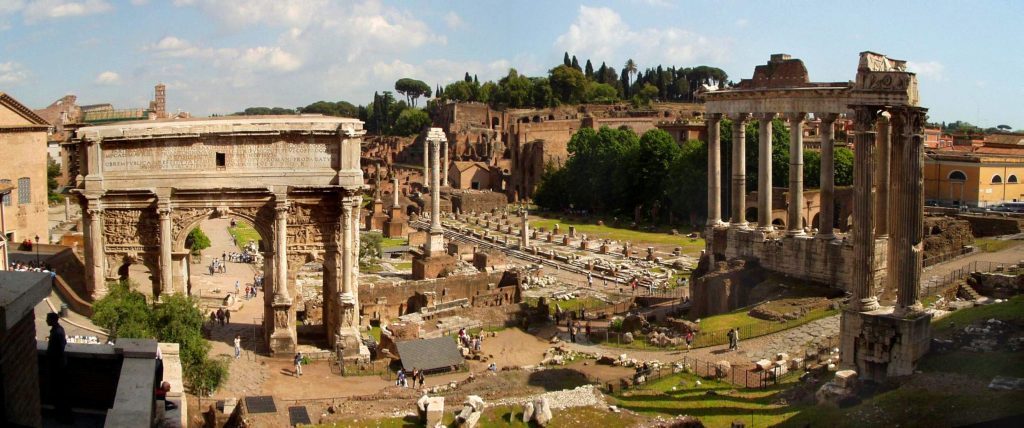Érôme is a small town in southeastern France, in a place called Drôme. It has about 822 people and covers an area of 7.33 square kilometers. Érôme is calm and sits on a hill across from another village called Ardoix. The mayor of Érôme is Sandrine Pereira, who started in 2020 and will be there until 2026. The town’s exact location is at 45°07′15″N 4°49′19″E, and it’s between 115 to 377 meters above sea level. The number of people living in Érôme has gone up and down over the years, with 808 people counted in 2020.
What is the Meaning of Erome
The name “Erome” comes from Latin and is a bit different from the name “Jerome,” which comes from the Greek name “Hieronymos.” This Greek name means “sacred name” or “holy name.” People often link the name “Jerome” with Saint Jerome, who was a monk and a smart person from the 4th century AD. He is famous for translating the Bible into Latin, which is called the Vulgate.
The History of Rome

Earliest Period : Founded in 753 BC, initially ruled by kings including its founder Romulus.
Transition to Republic: Became a Republic in 509 BC, replacing monarchy with elected magistrates.
Imperial Peak :Transitioned to the Roman Empire in 27 BC, marking a period of territorial expansion and cultural influence.
Early Days (625 BC – 510 BC): Rome began around 625 BC in places called Etruria and Latium. Six kings ruled Rome during this time. Rome grew stronger in military and money matters, and they made rules called the Roman constitution.
Republic Era (510 BC – 31 BC): After the kings, Rome’s government was run by rich people. They made a set of laws called the “Twelve Tables” in 451 BC. Rome got bigger, taking over places in Italy and other lands.
Empire Time (31 BC – AD 476): In 31 BC, the first emperor, Augustus, started ruling. It was a time of peace, riches, and Rome expanding to places on three continents. The Western Roman Empire fell in AD 476.
Medieval Era (AD 476 – 15th Century): Rome changed. The Papal States started, and Rome’s power became less important.
Renaissance (16th Century): Rome became a place of art and culture. Artists like Michelangelo and Raphael made great works.
Modern Times (19th Century till Today): Rome saw many changes. Napoleon ruled there, the city grew quickly, Mussolini led the country, and Rome became Italy’s capital in 1946.
You may also like: Yaupon Benefits: America’s Forgotten Tea Renaissance
What is the population of érôme
Location: Central-western Italian Peninsula, within Lazio, along the shores of the Tiber
Population: 2,860,009 residents within the city and 4,342,212 in the Metropolitan City
Nicknames: “The Eternal City”, “City of Seven Hills”, “Caput Mundi” (Capital of the World)
What is the demographic breakdown of érôme’s population
Population: 335,893,238 (est. 2024)
Population growth rate:0.4% (2022)
Life expectancy: 77.5 years (2022)
The demographic breakdown of Érôme’s population is not provided in the search results. However, the population statistics for Érôme from 1968 to 2020 are available. The population has fluctuated over the years, with 624 residents in 1968, 642 in 1975, 626 in 1982, 698 in 1990, 689 in 1999, 835 in 2009, 838 in 2014, 808 in 2020, and 822 in 2021
What are some popular tourist attractions in érôme
A list of Rome’s tourist attractions
Description: Rome is considered one of the world’s most beautiful ancient cities, home to numerous palaces, museums, parks, and more.
Visitor Numbers (2005): Received 19.5 million global visitors, a 22.1% increase from 2001.
Most Visited Attractions (2017): #1 Pantheon (8 million), #2 The Colosseum (7.036 million), #3 Trevi Fountain (3.5 million), #4 Sistine Chapel (3 million), #5 The Roman Forum (2.5 million).
Some popular tourist attractions in Érôme include:
- Rampe de mise à l’eau canoë-kayak-bateau-paddle in Érôme, France.
- Jerome State Historic Park in Jerome, Arizona.
- Audrey Headframe Park in Jerome, Arizona.
These attractions offer a mix of natural beauty, historic significance, and recreational activities for visitors to enjoy.

